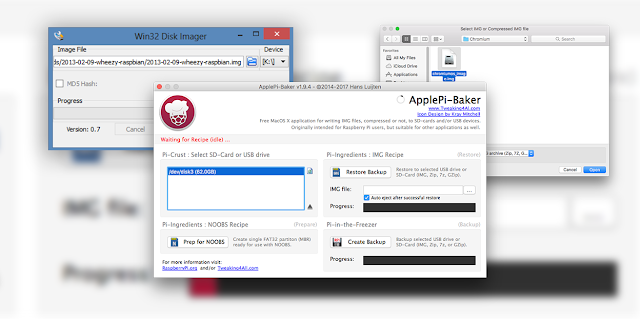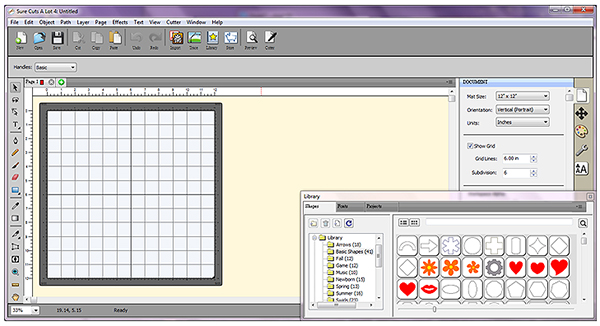Win32diskimager For Mac

balenaEtcher is typically the easiest option for most users to write images to SD cards, so it is a good place to start. If you're looking for an alternative on Windows, you can use Win32DiskImager.
 Mar 28, 2018 Question: Q: How does one install GCC on a Mac? Apple Footer. This site contains user submitted content, comments and opinions and is for informational purposes only. Apple may provide or recommend responses as a possible solution based on the information provided; every potential issue may involve several factors not detailed in the. May 21, 2017 Compiling GCC 9 on macOS Mojave Posted on May 21, 2017 by Paul. Updated 4 May 2019. In this tutorial, I will show you how to compile from source and install the current stable version of GCC with Graphite loop optimizations on your macOS computer. Apr 26, 2012 Often times, you need c or gcc compiler to compile open source projects in Mac OS X. The problem is Mac OS X doesn’t install the gcc compiler by default. If you try to install or compile some projects that required c/gcc compiler, following errors message will be logged: configure: error: C.
Mar 28, 2018 Question: Q: How does one install GCC on a Mac? Apple Footer. This site contains user submitted content, comments and opinions and is for informational purposes only. Apple may provide or recommend responses as a possible solution based on the information provided; every potential issue may involve several factors not detailed in the. May 21, 2017 Compiling GCC 9 on macOS Mojave Posted on May 21, 2017 by Paul. Updated 4 May 2019. In this tutorial, I will show you how to compile from source and install the current stable version of GCC with Graphite loop optimizations on your macOS computer. Apr 26, 2012 Often times, you need c or gcc compiler to compile open source projects in Mac OS X. The problem is Mac OS X doesn’t install the gcc compiler by default. If you try to install or compile some projects that required c/gcc compiler, following errors message will be logged: configure: error: C.
Win32diskimager Mac Os X
balenaEtcher
Unmount the partition so that you will be allowed to overwrite the disk; to do this, open Disk Utility and unmount it (do not eject it, or you will have to reconnect it). Note that On Mac OS X 10.8.x Mountain Lion, 'Verify Disk' (before unmounting) will display the BSD name as '/dev/disk1s1' or similar, allowing you to skip the previous two steps. Win32 Disk Imager This program is designed to write a raw disk image to a removable device or backup a removable devic win64 disk imager free download - SourceForge Connect. Aug 29, 2017 Win32 Disk Imager is a free program designed for writing a raw disk image to a removable device (USB flash drive, CD, DVD, etc) and backup removable storage device to an image file in Windows 10/8/7. It is an open-source tool, so any one who has programming experience can branch and modify it. The latest version is available for Windows 10/8/7. If you’re regularly running software or games from discs, such as DVDs or CDs, then you’ll probably want to create backups for many of your IMG files. One compact application which lets you do this is called Win32 Disk Imager.Basically, the app lets you generate image files from the media content on a USB drive, SD memory card, or another type of removable storage device.
- Download the Windows installer from balena.io
- Run balenaEtcher and select the unzipped Raspbian image file
- Select the SD card drive
- Finally, click Burn to write the Raspbian image to the SD card
- You'll see a progress bar. Once complete, the utility will automatically unmount the SD card so it's safe to remove it from your computer.
Win32DiskImager
- Insert the SD card into your SD card reader. You can use the SD card slot if you have one, or an SD adapter in a USB port. Note the drive letter assigned to the SD card. You can see the drive letter in the left hand column of Windows Explorer, for example G:
- Download the Win32DiskImager utility from the Sourceforge Project page as an installer file, and run it to install the software.
- Run the
Win32DiskImagerutility from your desktop or menu. - Select the image file you extracted earlier.
- In the device box, select the drive letter of the SD card. Be careful to select the correct drive: if you choose the wrong drive you could destroy the data on your computer's hard disk! If you are using an SD card slot in your computer, and can't see the drive in the Win32DiskImager window, try using an external SD adapter.
- Click 'Write' and wait for the write to complete.
- Exit the imager and eject the SD card.
This article uses content from the eLinux wiki page RPi_Easy_SD_Card_Setup, which is shared under the Creative Commons Attribution-ShareAlike 3.0 Unported license
| Setup Size | 12 MB |
| Operating System | Windows 10, 8, 7, VIsta & XP |
| License | Free |
| Author | Imagewriter Developers |
| Languages | English |
Win32 Disk Imager is a free program to read and write disk image files to USB flash drives or SD memory cards on Windows operating system. This software is manufactured to write a raw disk image files to a flash device or backup a removable device to a raw image file.
If you need to make a raw disk image or backup your drive then Win32 Disk Imager is a good choice. This Disk Imager has a simplistic user interface with straightforward functionality. Only 12 MB hard drive space is required to install Win32 Disk Imager on your PC.
You are also able to validate an image file using Win32 Disk Imager. Additionally, you can create MD5 and SHA-1 hash which you can save and use if you want to determine the validity of specific.IMG files.
Win32 Disk Imager needs no installation, all you have to open the application and start reading or writing image files to removable media. This disk imager works well with Microsoft Windows 7/8/10 and even with Windows Server 2008/2012/2016. Unfortunately, this program is not able to write CD-ROMs.
How Can You Write Bootable IMG Files to USB Drive With Win32 Disk Imager?
The following guidelines are helpful to write raw. IMG files to a USB thumb drive, or an SD/CF card using Win32 Disk Imager.
- Download Win32 Disk Imager and Extract it by using WinRAR or any other Windows data compression program.
- Insert your USB pen drive to the PC or a laptop and backup your important data files in the USB pen drive. Be sure that the USB drive is recognized and seem like a drive in a Microsoft Windows operating system.
- Run Win32 Disk Imager as an administrator, Select the image file you need to write, and select the removable USB drive or SD/CF card as Device and click Write.
- This will take a few minutes. After it has finished, Unplugs the USB flash drive or SD/CF card and plugs it into the machine you need to work with.
Download Free Win32 Disk Imager Free for Windows 7/8/10/XP/Vista 32 bit and 64-bit platform. Click below the download button to download utility.
Win32 Imager Download
Attention: It is strongly recommended not to remove the USB drive during writing image files to a USB drive. This may end up having a bad image file or a corrupted USB drive.